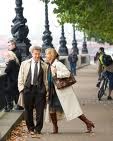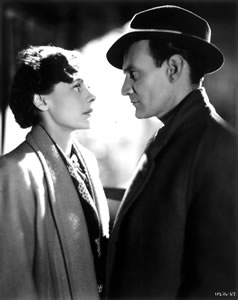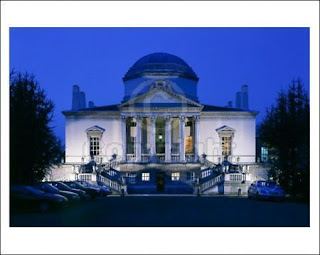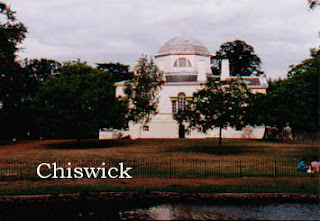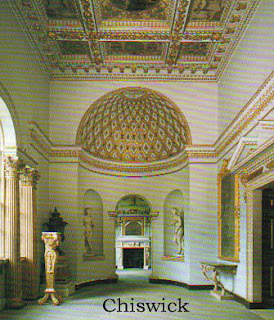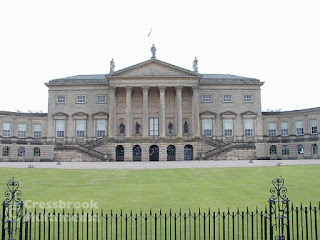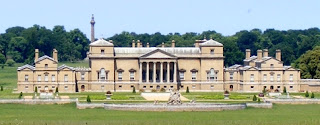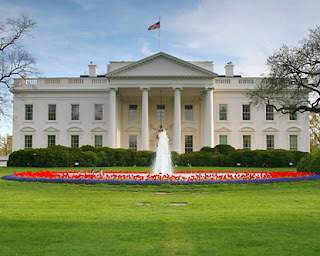Victoria here, just back from the meetings of The Burney Society and the Jane Austen Society in Portland, OR. We went out a day early in order to take in the Columbia River Gorge. Sadly, it was raining, but not very hard. In fact, it reminded me of most English rain, not quite a mist but not a downpour either. At right is Multnomah Falls, most spectacular of the many waterfalls along the gorge.
_by_Edward_Francisco_Burney.jpg) Fanny Burney (1752-1840) was the daughter of a celebrated musician and composer Dr. Charles Burney. Her half sister, Sarah Harriet Burney, was also a successful author of seven novels. Fanny Burney grew up in a household that often hosted brilliant circle of artistic and literary leaders. She kept a famous journal throughout most of her life and wrote four novels, many plays and other works.
Fanny Burney (1752-1840) was the daughter of a celebrated musician and composer Dr. Charles Burney. Her half sister, Sarah Harriet Burney, was also a successful author of seven novels. Fanny Burney grew up in a household that often hosted brilliant circle of artistic and literary leaders. She kept a famous journal throughout most of her life and wrote four novels, many plays and other works. Our friend Hester Davenport, (see our posts about visiting her in Windsor last June) is a leading member of the UK’s Burney society and the author of Faithful Handmaid, which relates the story of Burney’s position as a Keeper of the Robes for Queen Charlotte from 1786 to 1791. The position, while prestigious, gave Burney little time to pursue her writing career. We reported on our days with Hester Davenport on July 16 and 18, 2010 posts.
Our friend Hester Davenport, (see our posts about visiting her in Windsor last June) is a leading member of the UK’s Burney society and the author of Faithful Handmaid, which relates the story of Burney’s position as a Keeper of the Robes for Queen Charlotte from 1786 to 1791. The position, while prestigious, gave Burney little time to pursue her writing career. We reported on our days with Hester Davenport on July 16 and 18, 2010 posts. The Burney Society was proud to dedicate a window in Westminster Abbey to Frances Burney a few years ago. Our president for sixteen years has been Paula Stepankowsky (see photo below), whose leadership has been outstanding. This year the society has grown large enough to separate the UK and North American branches. Click here for more information on the McGill University Burney Center.
The Burney Society was proud to dedicate a window in Westminster Abbey to Frances Burney a few years ago. Our president for sixteen years has been Paula Stepankowsky (see photo below), whose leadership has been outstanding. This year the society has grown large enough to separate the UK and North American branches. Click here for more information on the McGill University Burney Center. For information on the North American Burney Society and the upcoming meetings of the group, click here. Fanny Burney’s first novel might be her most famous, the coming of age story of Evelina, a delightful tale with incredibly detailed accounts of late 18th century life in Britain. My favorite is Camilla, perhaps because I read it first and loved every page. All this is a long way of introducing the conference in Portland. The subject was “Burney and the Gothic.” Many speakers adressed aspects of this fascinating subject in Burney’s novels, finding many gothic references where I had entirely missed them! But viewed in the context of the popular genre of gothic novels in the late 18th and early 19th centuries, of course all of these arguments made obvious sense (not to mention sensibility!).
For information on the North American Burney Society and the upcoming meetings of the group, click here. Fanny Burney’s first novel might be her most famous, the coming of age story of Evelina, a delightful tale with incredibly detailed accounts of late 18th century life in Britain. My favorite is Camilla, perhaps because I read it first and loved every page. All this is a long way of introducing the conference in Portland. The subject was “Burney and the Gothic.” Many speakers adressed aspects of this fascinating subject in Burney’s novels, finding many gothic references where I had entirely missed them! But viewed in the context of the popular genre of gothic novels in the late 18th and early 19th centuries, of course all of these arguments made obvious sense (not to mention sensibility!). In
| Portland Public Library |
| Works of Mary Robinson, 1st edition |
| Letters of Frances Burney, Madame D’Arbly |
| First editions of Emma and Mansfield Park beside a shawl, of linen, according to family tradition, embroidered by Jane Austen |
| Emma, a first edition, in the collection of Paula LaBeck Stepankowsky |








